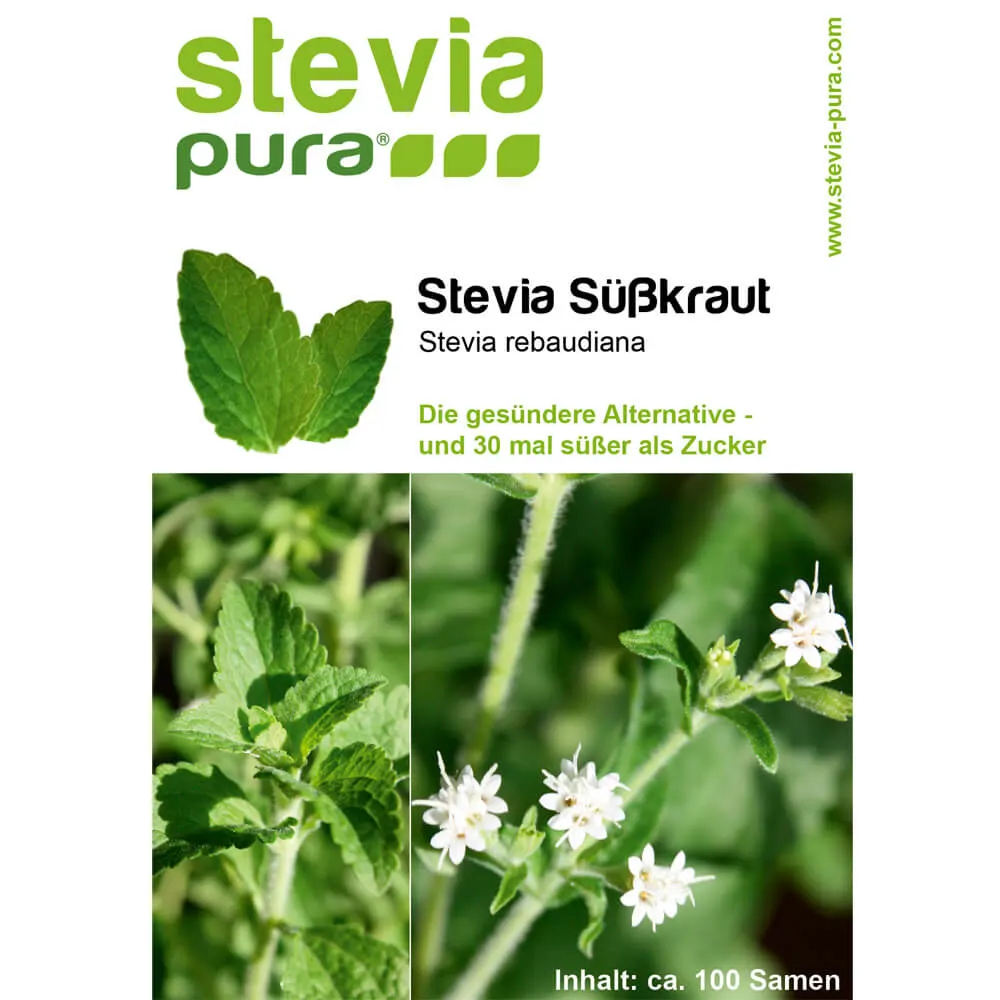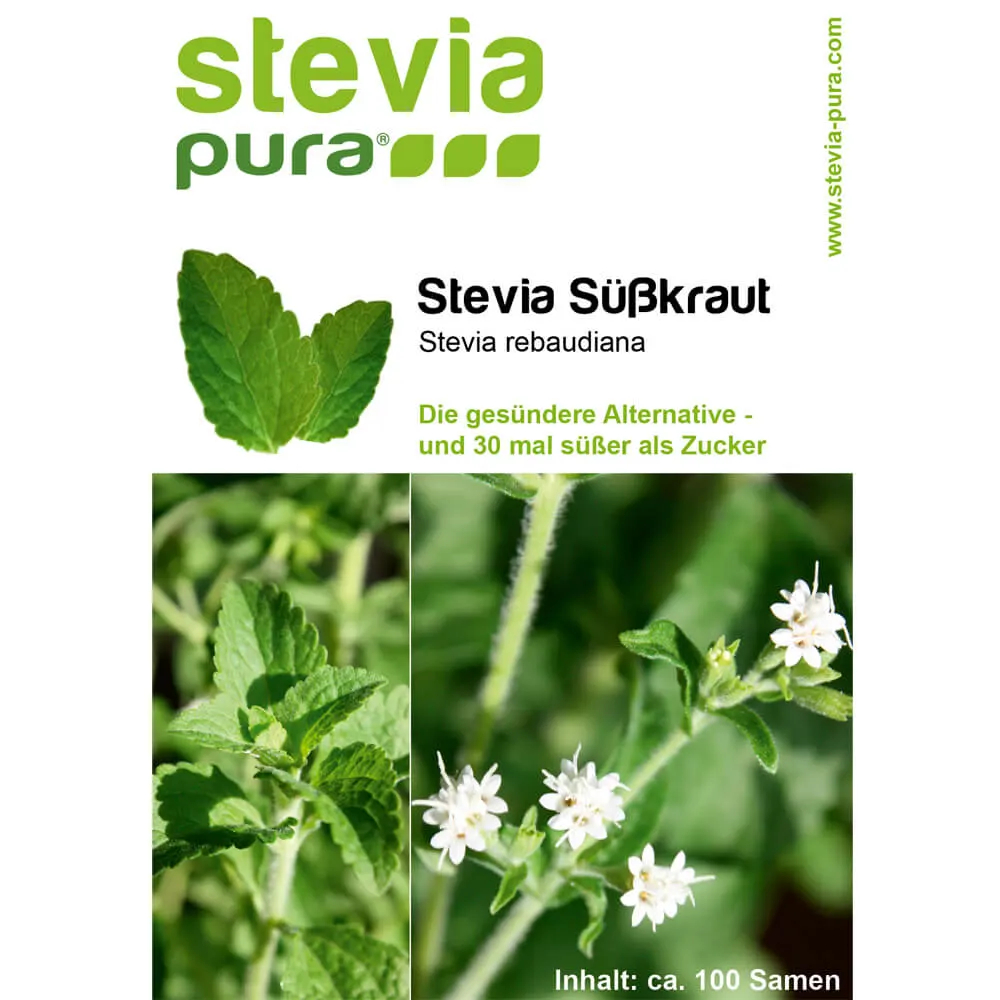Stevia seeds | Sweet Leaf Stevia seeds - The sweet herb of the Incas.
In Europe, Stevia is now the best-known sweetener plant besides liquorice. A group of glycosides, the steviosides and also rebaudiosides, are responsible for the enormous sweetening power of the Stevia plant. Stevia originally comes from Paraguay. To meet the huge demand, Stevia is now cultivated on plantations all over the world.
Tea with Stevia leaves - is it allowed?
Within the European Union, Stevia was unfortunately banned for a long time. The stevia plant was one of the first to fall under the Novel Food Regulation under food law in the European Union (EU).
Stevia was classified as a Novel Food for a long time, which means that it was not used as a food to any significant extent in the EU before 15 May 1997. Novel foods or those that have not been used as food on a significant scale in the EU before this deadline must undergo a special authorisation procedure before they can be legally placed on the market.
However, the EU Commission has made some exceptions for the use of stevia in food. One of these exceptions allows the use of dried stevia leaves as an ingredient in herbal and fruit tea blends. In this particular case, the use of stevia in dried form in these tea blends is allowed without the need for prior Novel Food approval (Novel Food Catalogue) from the EU Commission.
For mate tea, the national drink of Paraguay, Stevia leaves are the traditional and calorie-free sweetener. The sweeteners contained in the stevia leaves of the subtropical plant exceed the sweetening power of sugar by 30 to 40 times and are also suitable for diabetics.
You can grow your own plants from Stevia seeds.
Stevia rebaudiana can also be grown in our latitudes. The Stevia plant is usually biennial and does not tolerate frost.
You can grow your own plants from Stevia seeds. The germination temperature should be at least 22 degrees Celsius for successful cultivation. For sowing, fill the growing soil into trays. Since Stevia is a light germinator, the Stevia seed is sown on the surface of the soil and pressed on and not covered with soil.
Moisten the soil well and cover the tray with glass or foil, do not forget a gap for ventilation. The optimal location is a windowsill and should be bright and warm.
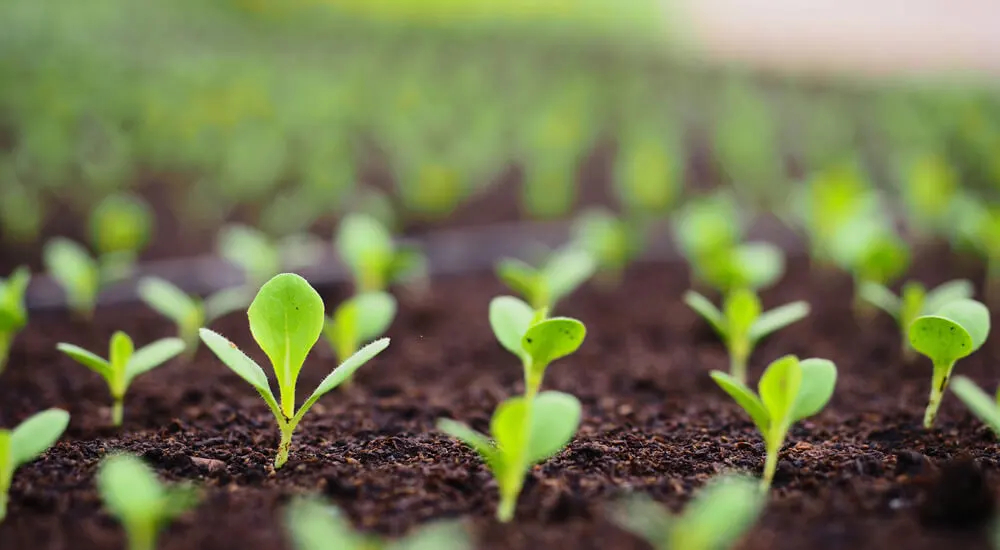
The Stevia plant loves light and warmth
The first seedlings often emerge after only 10 days. Now the individual plants can be transplanted (pricked out) into a pot. The size of the pot should be about 16 to 18 cm in diameter so that they can grow enough roots.
Mix the soil with coarse sand, as it should be very permeable. Please fertilise very sparingly. The Stevia plant loves light and warmth. A sunny spot on the balcony or terrace is ideal.
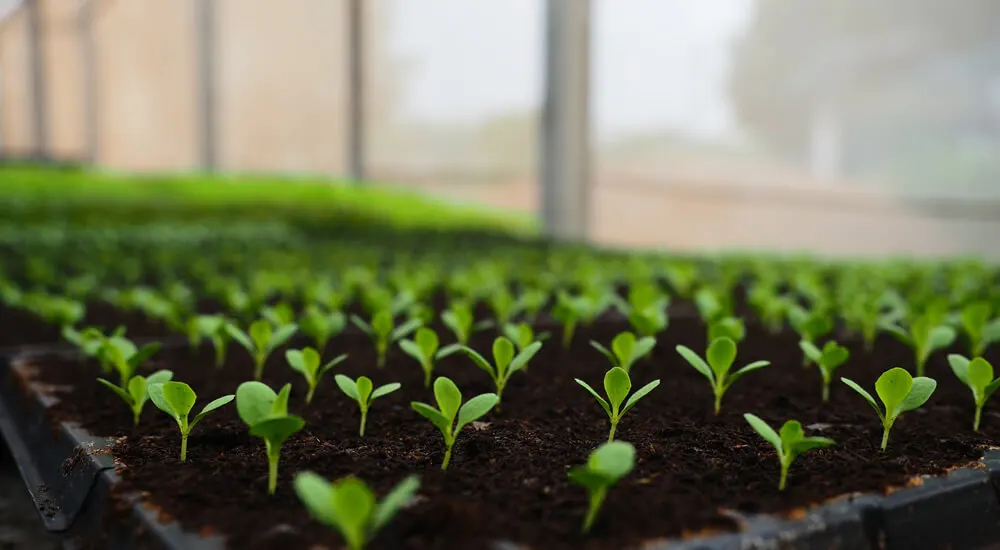
Young Stevia Plants Cultivated from Stevia Seeds
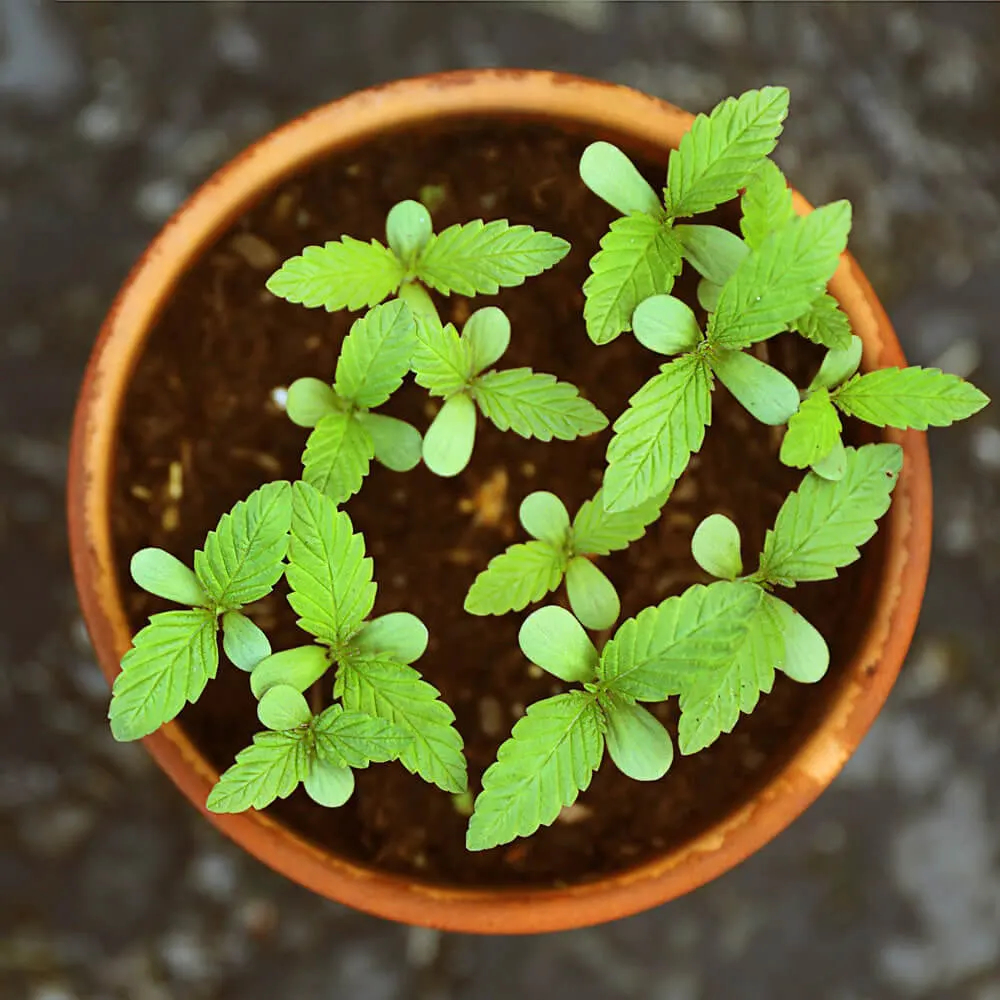
Small pricked Stevia plants in a pot
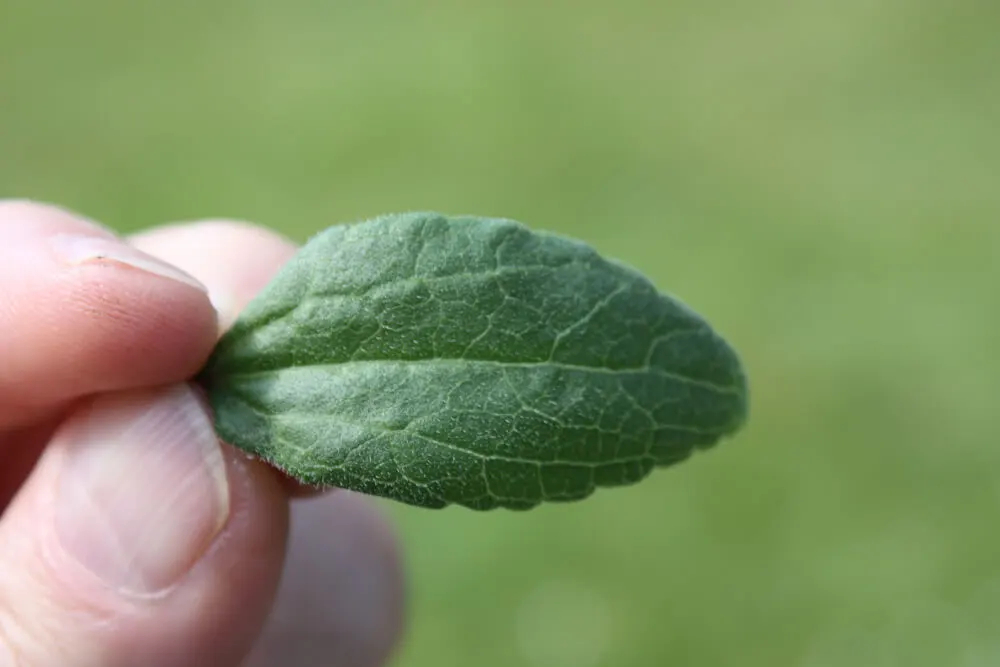
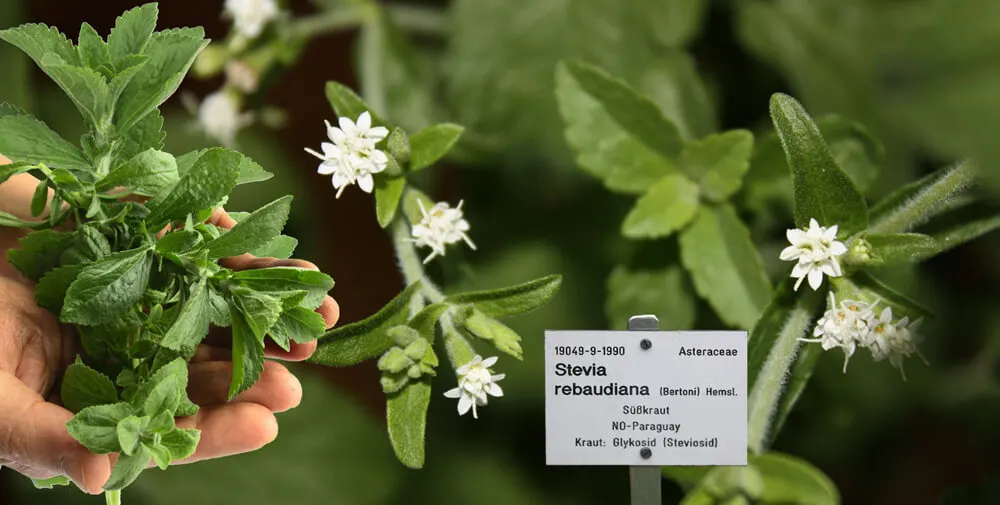
The tiny white flowers and leaves of the Stevia plant
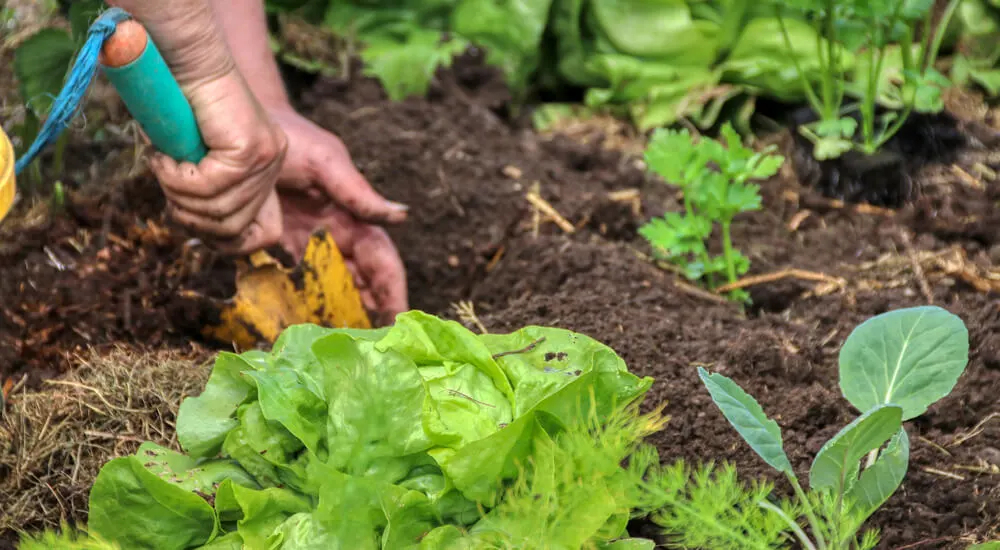
From June onwards, Stevia plants can be transplanted into the garden.
Like many plants during the growing season, Stevia plants like it moist. Root growth is stimulated by an interplay between moist and dry and the plant thrives better that way.
Waterlogging in the root area should be avoided at all costs, as bacterial wilt, a plant disease (tracheobacteriosis), quickly forms and the plant dies.
Plants thrive better outdoors than in flower pots. Stevia plants can be transplanted into the garden from June onwards. Before the first frost, however, they must be moved to a frost-free place.
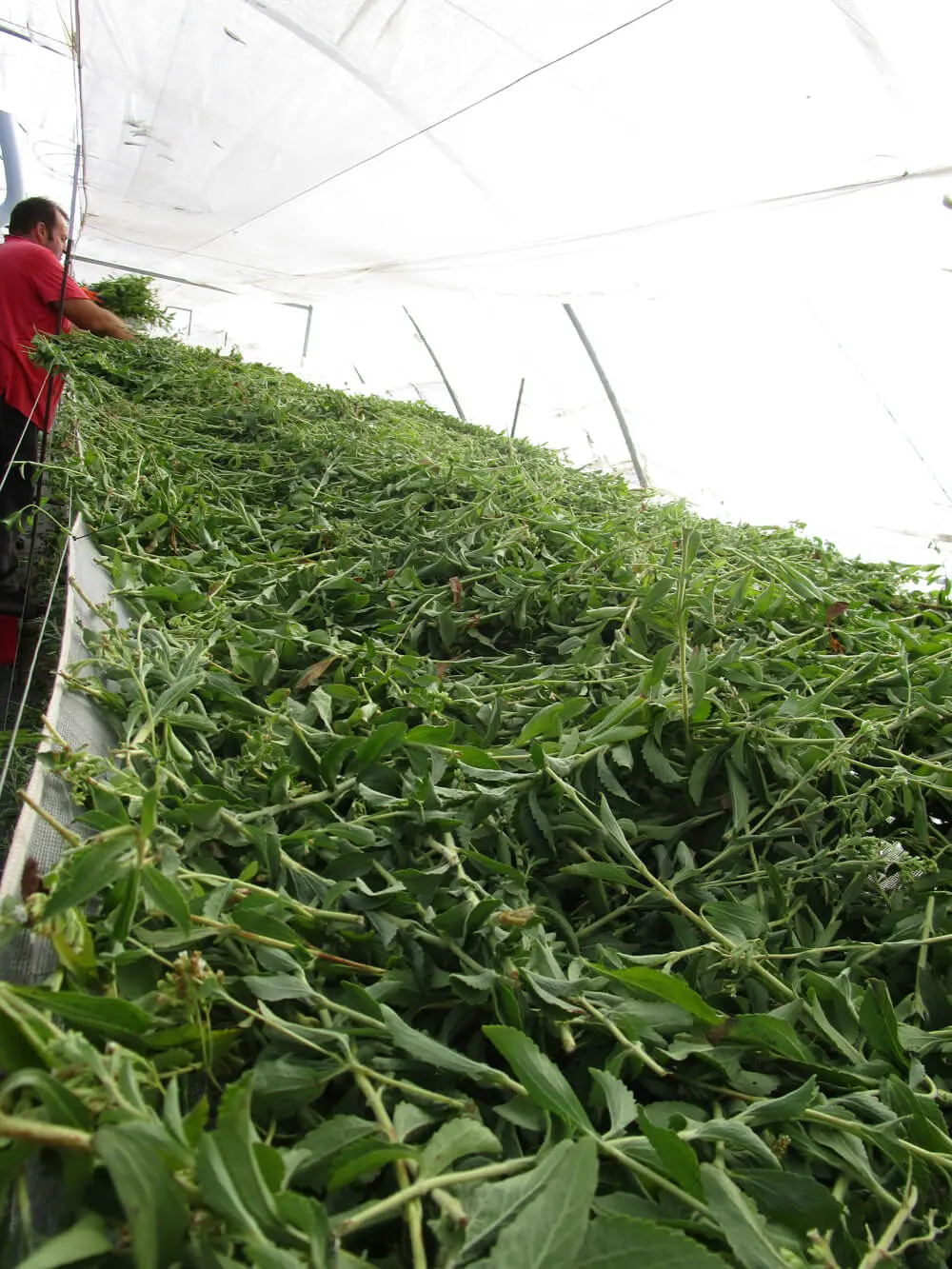
Only the tips of the Stevia leaves are harvested.
During the cold season, they are best overwintered in a cool place, a bright window spot or in the conservatory.
After the growth and flowering period, as with all plants, comes the dormant period. The upper parts of the plant die due to cold, lack of light and dryness. The plant retreats to the rootstock. You should cut off the withered and dead branches down to 5-7 cm.
The plant can also be overwintered in a dark cellar during the dormant season. Make sure that the rootstock does not dry out and that the temperature does not drop below +2 degrees.
From March, bring the Stevia plant to a sunny, warm window. New shoots will soon sprout from the rootstock.
If suitable climatic conditions prevail, the dormant period can be passed over in a greenhouse or a sunny conservatory. The plant will then remain green all year round.
Only the tips of the stevia leaves are harvested, just like tea or basil. This also encourages the plant to grow bushier.
Spread out the Stevia leaves and dry them in the shade with good ventilation. Store the dried leaves in a dark, cool and dry place.

 German
German Dutch
Dutch French
French Italian
Italian Portuguese
Portuguese Spanish
Spanish

